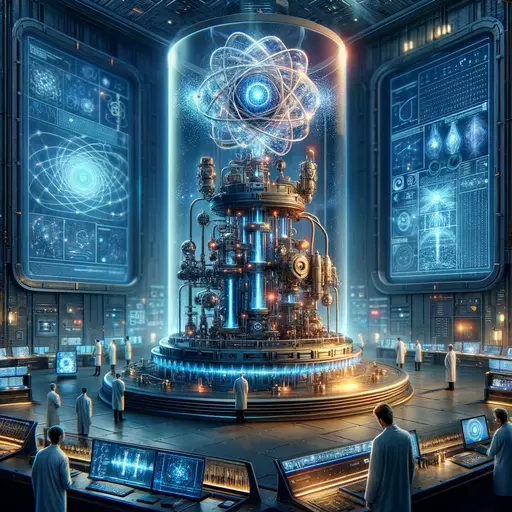
Quantum Energy Generators (QEGs) present an intriguing concept within the realms of alternative energy and fringe science. The idea behind QEGs is rooted in quantum physics, promising to harness the underlying energy of the quantum vacuum – the seemingly empty space that is actually filled with fluctuating energy particles. This article investigates the concept of QEGs, exploring their theoretical basis, the reality of their development, and the challenges faced in making such devices a practical reality.
The Concept Behind Quantum Energy Generators
The theory of quantum energy generators is based on the principles of quantum mechanics and zero-point energy. Zero-point energy is the lowest possible energy that a quantum mechanical physical system may have; unlike in classical mechanics, quantum systems constantly fluctuate in their lowest energy state due to the Heisenberg uncertainty principle. Proponents of QEGs argue that this abundant source of energy can be tapped and converted into usable power, providing an unlimited supply of free energy.
Examining the Historical Context
The concept often cites the work of inventors and scientists like Nikola Tesla and T. Henry Moray, who purportedly developed technologies capable of harnessing energy from the environment. QEG enthusiasts claim that these devices can produce more energy than they consume, violating the conventional law of conservation of energy, which is a foundational principle in physics stating that energy cannot be created or destroyed, only transformed from one form to another.
The Allure of ‘Overunity’
The idea that a device could generate more energy than it consumes, a concept called “overunity,” holds a strong appeal. It parallels the age-old attempts at creating perpetual motion machines, which consistently defy known scientific laws. QEGs speak to a fundamental desire for limitless, easy solutions – the promise of “free energy” resonates deeply, making it critical to evaluate such claims with scientific rigor.
Debunking QEG Claims
Those who champion QEGs bear the burden of proof. Rigorous scientific validation requires working prototypes, testable under controlled conditions. To date, none have been presented that pass such scrutiny. Moreover, QEG enthusiasts often employ a mix of technical jargon and appeals to historical figures that mask a lack of substantial evidence.
The Future of Energy Innovation
While QEGs remain speculative, legitimate exploration in physics could offer real energy breakthroughs. Research in areas like fusion power or advanced methods of energy storage hold greater promise. This underscores the essential role of scientific standards and peer review in driving innovation that transforms our energy landscape.
Investigating the Reality
Despite the attractive promise of free and unlimited energy, quantum energy generators remain highly controversial and scientifically unsubstantiated. Mainstream scientific and engineering communities have consistently debunked claims made by QEG proponents, citing a lack of empirical evidence and the violation of fundamental physical laws.
No peer-reviewed scientific studies have conclusively demonstrated the feasibility of QEGs as described by their proponents. Devices that have been presented as prototypes or working models of QEGs often fail to undergo rigorous scientific testing or independent verification. The claims surrounding QEGs typically fall into the realm of pseudoscience, with a significant gap between the theoretical underpinnings of quantum mechanics and the practical application of these principles in the form of a working generator.
Challenges and Criticisms
The primary challenge in the development of quantum energy generators is the apparent violation of the conservation of energy. To create a device that produces more energy than it consumes would require new physics beyond the Standard Model of particle physics, which is the best theory we have for understanding the fundamental particles and forces that govern the universe.
Critics also point out that even if zero-point energy could be harnessed, the technology to do so efficiently and on a scale that would make it a viable source of power does not currently exist. The process of extracting usable energy from the quantum vacuum, if at all possible, would likely require highly advanced technology that goes beyond our current understanding of physics and engineering.
The Road Ahead
While the concept of quantum energy generators captures the imagination and offers a tantalizing vision of a future with unlimited clean energy, the reality is far more complex. The development of such technology would not only require groundbreaking advances in physics but also a reevaluation of some of the most well-established principles in science.
The pursuit of alternative energy sources is crucial in addressing the pressing energy needs of our planet. However, it is equally important to base our exploration on sound scientific principles and rigorous empirical evidence. The fascination with QEGs highlights a broader interest in exploring unconventional sources of energy, but it also serves as a reminder of the importance of critical thinking and scientific skepticism in evaluating such claims.
For now, the concept of quantum energy generators remains a speculative idea rather than a tangible reality. The future of energy lies in continuous research, innovation, and the rigorous testing of new technologies, guided by the scientific method and a commitment to empirical evidence.
